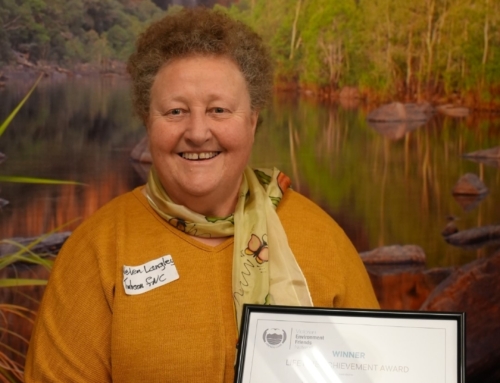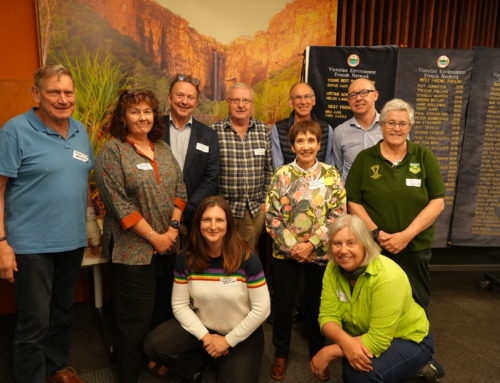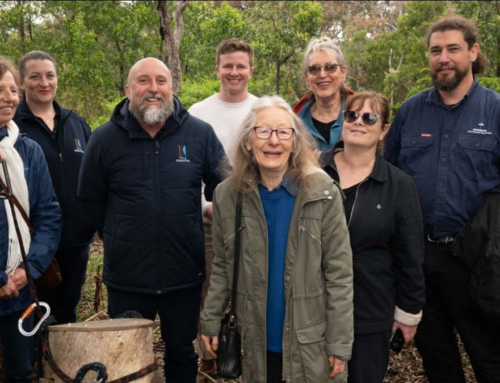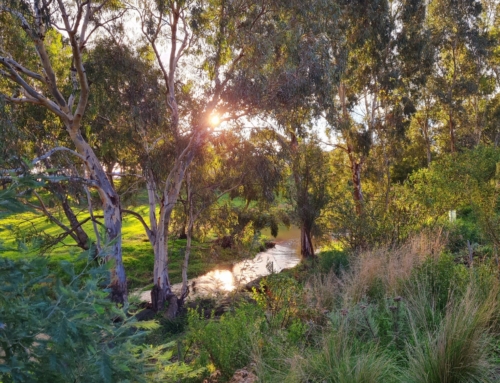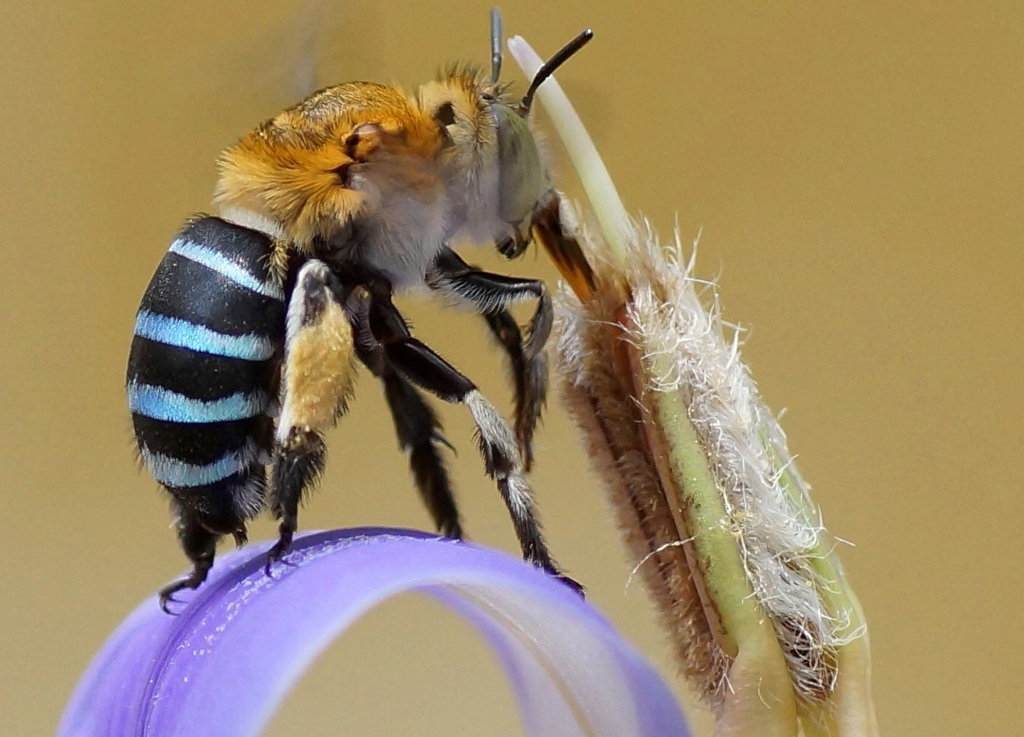
The striking Blue-banded bee has pale opalescent blue stripes on its abdomen. Photo: Chiswick Chap CC BY-SA 4.0
Friends of Merri Creek ran an amazingly successful crowd-funding campaign called Help the Blue-banded Bee which raised $25,073 – over 66% more than the original target of $15,000. This qualifies the group to receive $15,000 matching funds from the Department of Environment, Land, Water and Planning, making a total of $40,073 to fund a project, designed by Merri Creek Management Committee, to establish ‘pollination pathways’ between endangered Matted Flax-lily populations along the Merri Creek in Fawkner and Reservoir.
What is a Pollen Pathway?
Plants rely on animals, wind and water to move their seeds to help colonise or recolonise distant landscapes. Animals and wind also move pollen between unrelated plants so they can produce viable seed. In this way habitat corridors for animal movement can also be the ‘pathways’ for pollen!
When we fragment the landscape, plants sometimes get left on islands of bushland with only a few possible mates, and, over time, all the plants end up being closely related and unable to produce much viable seed. It gets even more difficult when male and female flowers are produced on different plants. In the worst cases, a plant has no partners to cross-pollinate with at all!
Some plants, like Sheoaks and grasses, have pollen that is spread by the wind; while some seed, such as the berries of Tree-violets, are eaten by Silvereyes which then deposit the seed kilometres away. But many seeds are shifted only a short distance by wind, water or on less mobile animals. And, pollen is often moved by insects and birds that move it only a few hundred metres.
In the case of the critically endangered Matted Flax-lily (Dianella amoena), it depends on being pollinated by the Blue-banded Bee, which only has a foraging range of about 300 metres. So only plants that are within 300 metres of each other have a good chance of exchanging pollen.
The Pollination Pathway project
The Matted Flax-lily persists in patches along Merri Creek, in the northern suburbs of Melbourne. A map of known Flax-lily suggests that some of the remnant patches are well connected, but others are isolated, being several hundred metres from other lilies.
We don’t see young Flax-lilies establishing, probably because the plants are too far apart and not cross-pollinating, or weeds choke out the places where the seeds might otherwise grow. The Pollination Pathway project aims to deal with these two issues so natural seeding can occur.
Cross-pollination between the Matted Flax-lily plants requires a specialised ‘buzz-pollination’ that is carried out by native bees, in particular the Blue-banded Bee, Amegilla sp. In 2017 Friends of Merri Creek aims to increase the number of reproductively viable Matted Flax-lilies to 400 plants to fill in the gaps in the bee’s ‘pollination pathway.’ This will include weeding, propagating, planting patches of lilies as ‘stepping stones’ for foraging Blue-banded Bees, and monitoring of the pollinators.
Find out more:
The Pollination Pathway event will be posted on the Friends of Merri Creek website next year at www.friendsofmerricreek.org.au where you can also check out their great range of events, or contact them at friendsofmerricreek@gmail.com


